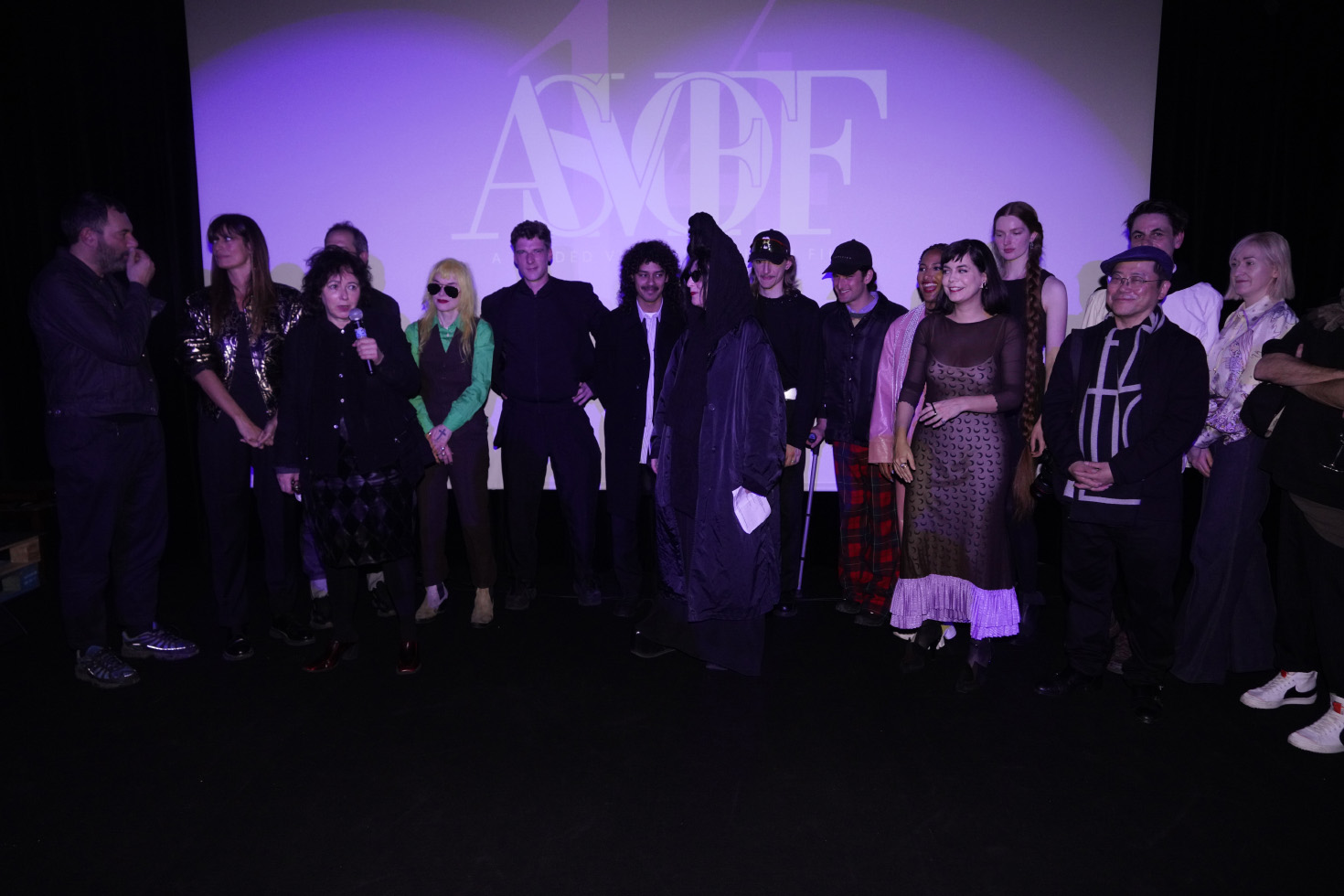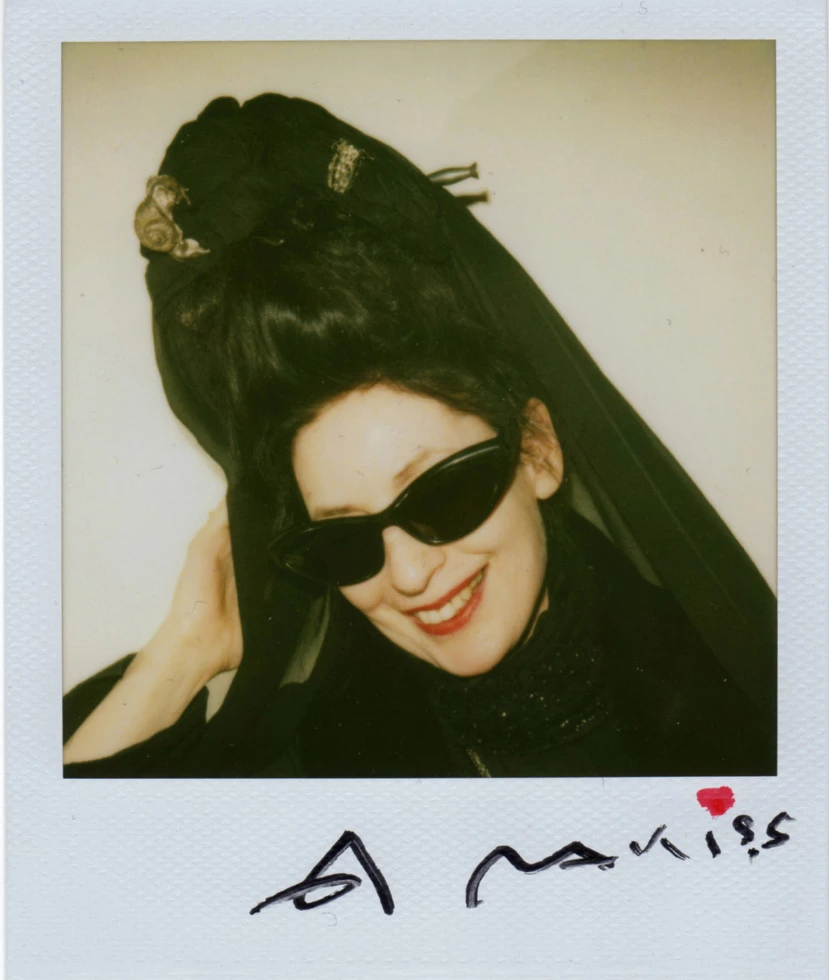
- Date
- 22 DECEMBER 2022
- Author
- MIRA WANDERLUST
- Image by
- Categories
- Interviews
Diane Pernet, icon of style and film curator, talks about ‘shades’ of future in an intimate conversation with RED-EYE
An exceptional and unusual person, a greatly admired and mysterious fashion icon who noticed the potential in many key people from the fashion industry like Imran Amed, founder of Business Of Fashion or Stefan Siegel, founder of Not Just A Label, the angel in black, Diane Pernet. Her visionary soul is characterized by blurring the boundaries between the important and the unimportant ones in the world of fashion. The main things she is interested in are quality, transparency and to stay focused on positive or what is still positive nowadays in the fashion industry.
She has snatched away the door key from the dark guardians of the fashion world and allowed free access to information and international cooperation for fashion creatives throughout the world. We can say her incredible impact with an accurate sight on young generations has had a considerable impact on many successful creatives, at least we need an accurate ‘shaded view on fashion’, NOW MORE THAN EVER!
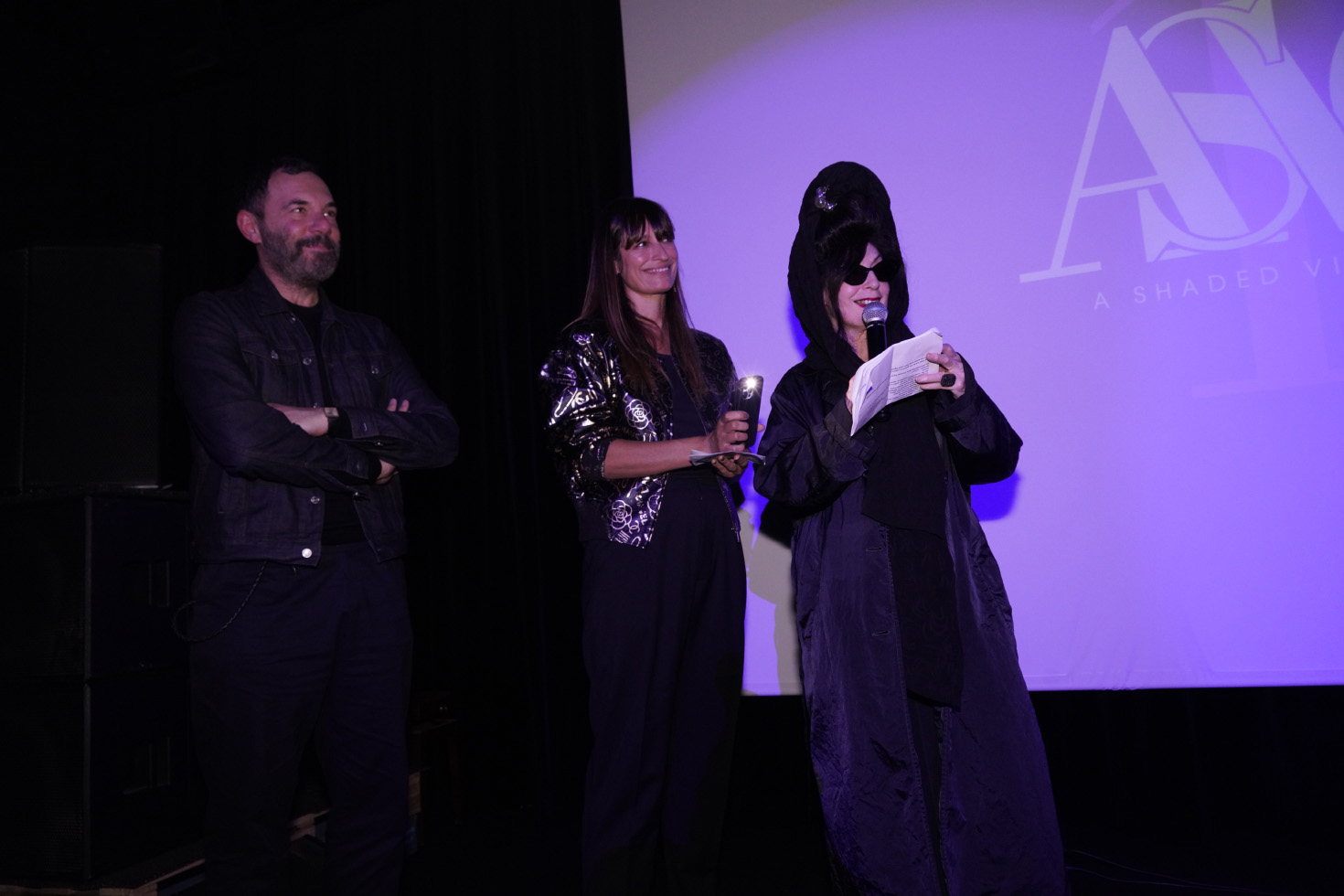
Diane Pernet is the founder and director of ASVOFF , a fashion film festival based in Paris. Credited as the first fashion blogger, the noted journalist and fashion film curator runs a respected fashion film festival. Along with pioneering the advent of fashion blogging via her blog ‘A Shaded View on Fashion’ (ASVOF), celebrated fashion writer Diane Pernet is also credited with spearheading the fashion film genre, providing a new interactive medium through which artists, photographers and designers can collaborate on creative projects. Along with founding A Shaded View On Fashion Film (ASVOFF) – an international travelling showcase holding competitions for short films within the fashion, style and beauty genres – Pernet has also curated film projects such as CineOpera in 2010 held at the Corso Como in Milan and NOOVO in Santiago de Compostela in Spain. Prior to launching ASVOF in 2005, Pernet was a digital fashion reporter for Joyce, Elle France and Vogue Paris.
The American, having initially designed for thirteen years under her namesake brand, had relocated to Paris in the early nineties, landing her first role as a costume designer for the film Golem l'Esprit d'Exile in 1992. In 2006, Pernet was commissioned by Mark Eley of Eley Kishimoto to make a film for the brand's menswear launch. Along with filming the documentary, Pernet blogged about the entire journey from London to Monte Carlo and the project served as the impetus for launching a fashion film festival. Pernet’s first festival, entitled ‘You Wear it Well’ debuted in Los Angeles at CineSpace in 2006, laying the foundations for the ASVOFF in 2008, with the festival’s first edition launched in September in the Jeu de Paume national museum in Paris. Pernet has also produced documentaries such as Swiss Textile Designer Profiles, 8 Years of the Making of the Festival d’Hyères, Portrait of a Consumer, and Fashioned Out, and has served as a talent scout for the Festival d’Hyères in the South of France. The multi-talented creative holds a degree in filmmaking and communications from Temple University in America and has also attended both Parsons and FIT.
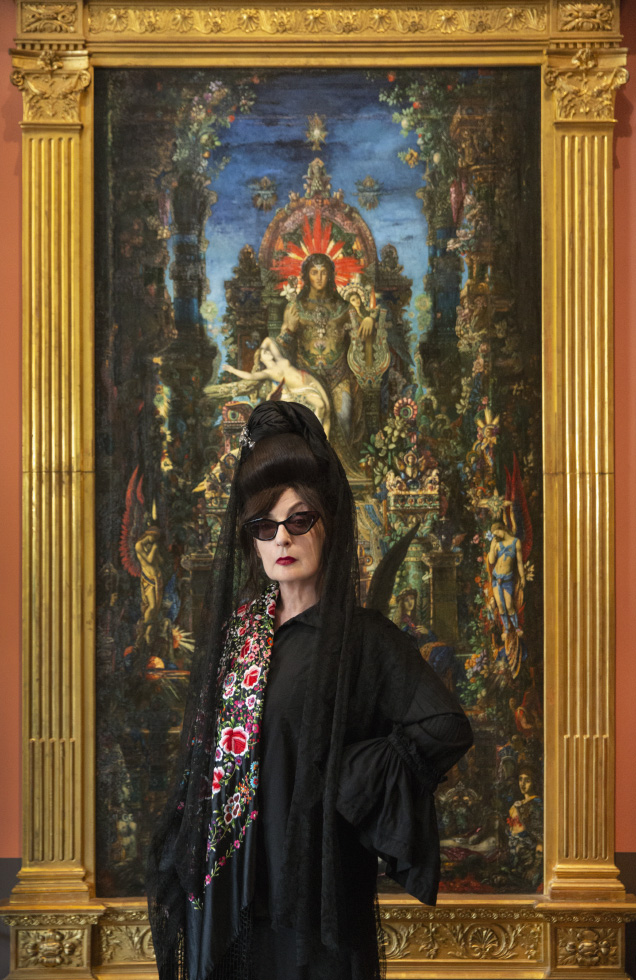
Regarding what inspired and motivated Diane to start ASVOFF, she had the idea many years before but it was too soon and there was not enough material out there. Diane started when Mark Eley of Eley Kishimoto asked her to make a road movie of the launch of his menswear collection via the Gumball Rally. It was an 18-minute film and she showed it to her LA contributor at the time and he asked her if she wanted to screen it in LA. The next day her Mexico City correspondent sent her a film and she posted it on A Shaded View On Fashion and they decided instead of just screening her film in LA they would put together a festival.
Diane Pernet’s exuberance for emerging creatives and the vision on how the future of fashion will be is something that shouldn’t be underestimated. We think she is one of the most influential females in fashion and cinema, she always wanted to challenge and reinvent herself, through groundbreaking projects and exploring new ideas. If one day I was given one power in this world, I would want to be a ‘Diane Pernet’ in a ‘’ME GENERATION’’ .
Diane was always able to drive change by innovation to at least one part of the industry or the world. Today more than ever, innovation plays such an important role in changing our lives.
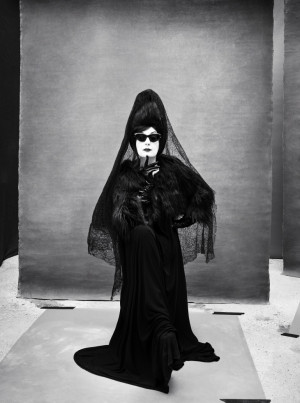
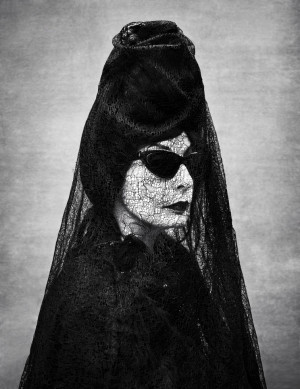
Every time I saw and met you, I got chills because you have been the godmother of so many key people in the fashion, film and art industry. Something that today, perhaps, is really needed, a lot... I also remember an interview with you saying ''If you are not different from the others, then you don't say anything''. Can you elaborate more on this thought and how you perceive the potential in others?
I had never thought about it, I just think it's a matter of instinct when I perceive potential in the people I meet and have met. I believe that special people are special because they have to 'say' something different, it has nothing to do with physical appearance. Is about those people that make the impossible possible thanks to their belief and their imagination. Also the idea of self-identity and how this aspect is missing somehow today in many creatives, but, there are also many examples when it comes to cultural identity and its positive impact on others and the fashion industry: Alessandro Michele for GUCCI, Demna Gvasalia for Balenciaga and others. We should search constantly for our self-identity, that is an integral aspect of living authentically. It is your perception of yourself, how you define yourself, essentially they’re all the answers that come up when you ask “who am I?” . Fashion and self-identity are intrinsically inter-connected. It is no secret that we dress in alignment to how we define ourselves, whether it’s our gender, nationality, religion, economic status, social role, or who we aspire to be. Not only is our style and self-identity interconnected, but we also use style to creatively express our self-identity. Our fashion choices we make on a daily basis are a huge indicator of our identity. The freedom that comes with self-expression is magnificent and sets you on a path to being a happier version of yourself.
It has never been easier than it is now. With social networks, if you have something to say, you just have to do it and someone will notice it: all you need is a keen eye to create movement.
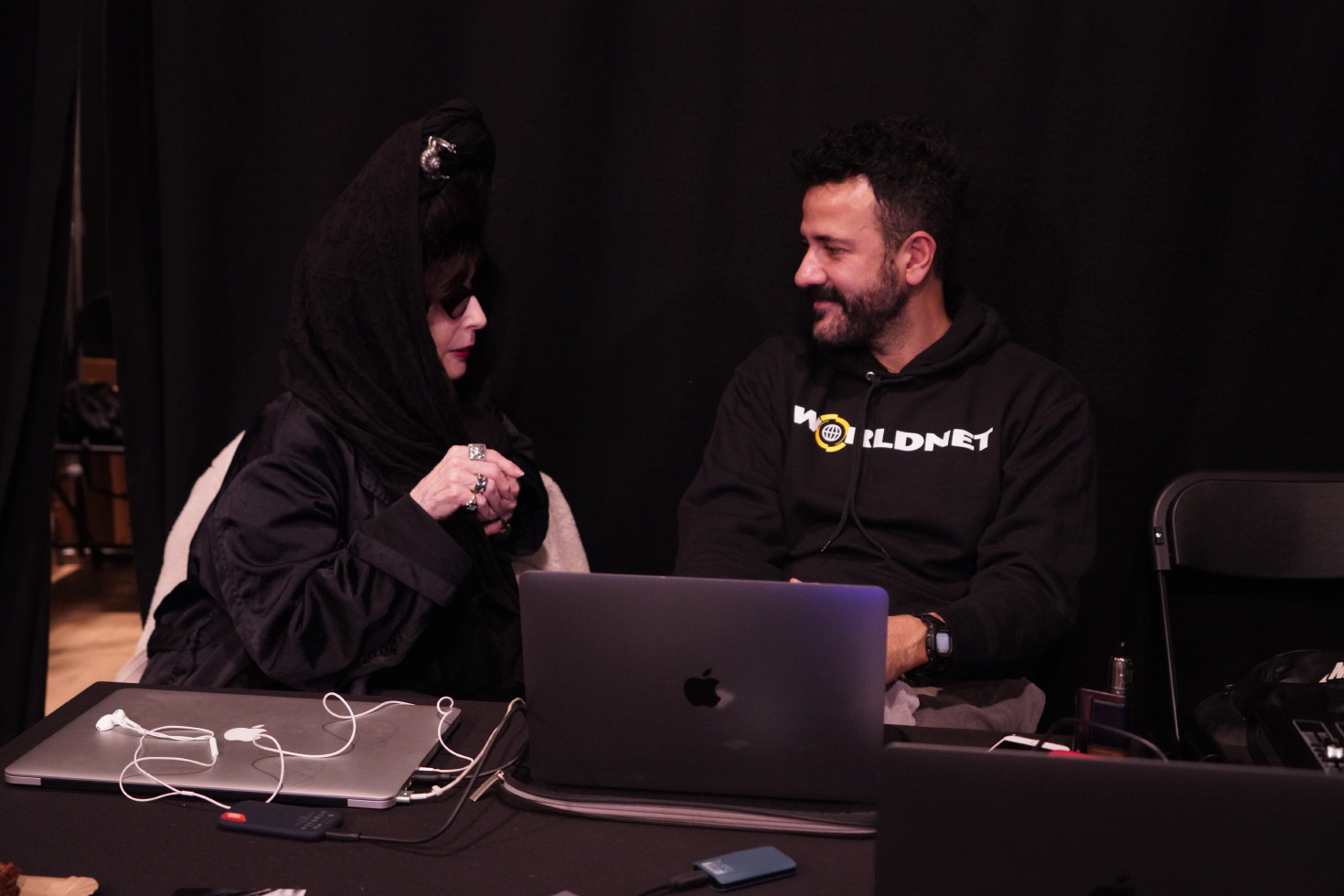
You’re a pioneer of fashion blogging and your blog was a healthy way to support emerging creatives. How do you see the ‘blogging’ industry today? How do you seek originality in youth?
I started early in 2005, there were no fashion blogs then, just food or political blogs. I developed my blog with a film mentality. It was about feeding people, giving them something to be inspired by. These days, people start blogs with a strategy to make money. It’s the same with talent scouting. I like to help and empower people, but I do it for pleasure, not for money. I just see things and I like to share them. My blog is cultural. It’s not just fashion, it is about art, music and more and I think it’s interesting.
I learned how difficult it is to be independent when I worked for Elle.com or Vogue. It’s not based on your creativity. Unless you’re an advertiser, you won’t get any coverage. So I like to help people. I look for originality, for someone that actually has something to say, that does not just regurgitate something from the past. It’s very hard to find these talents. It’s a matter of balance. My favorite designer is Dries van Noten. He’s a great balance. It’s not a matter of trends or fashion. It’s about making clothes that are timeless, that you like to wear until they fall apart. Fashion is about quality, personal vision, textiles, and color. Even though I wear black. I think fashion, and what I look for, is desire. Fashion needs to make you say “wow.”
Film is becoming an important medium in the fashion industry. Why do you feel it is so important?
Consumers understand very well that fashion goes much deeper than clothes or a photograph. That’s why the top tier of the industry spends a fortune on advertising, marketing and branding. But luxury consumers are realizing much faster than most brands that fashion film is one of the best ways we have to capture and distribute the elusive power of fashion. And as most good CEOs know, seduce the customer and you’re half of the way to selling your product.
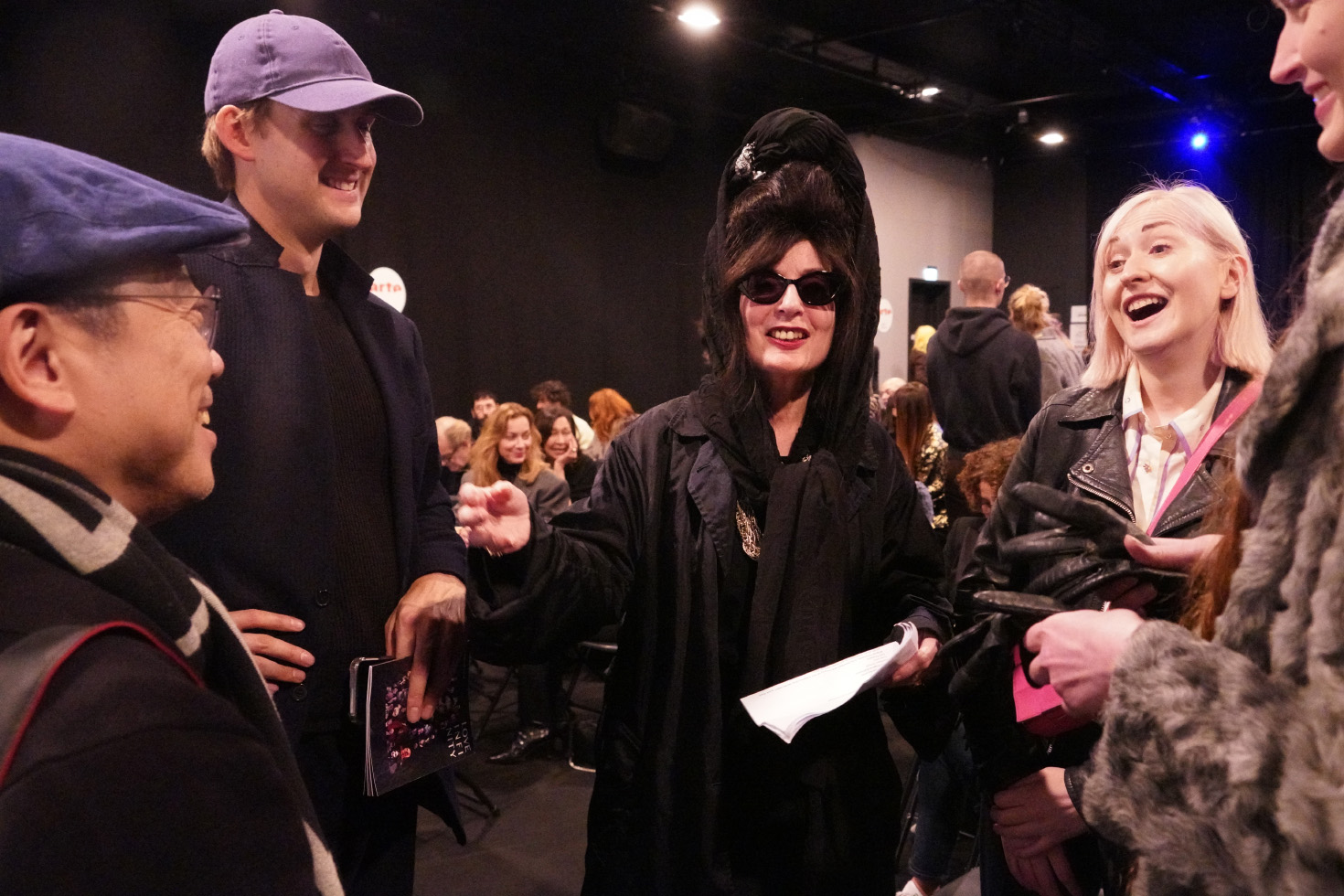
What is the most challenging issue in terms of organization regarding ASVOFF? How was the latest edition of the fashion film festival in Paris? Have we noticed the new CONSCIOUS FASHION section, which is unusual for a film festival. How important it is today to talk about sustainability for a better future in the fashion world.
I think it was a successful edition, even without so much money. The most challenging part is finding sponsors for ASVOFF.
Regarding conscious fashion, I think it is part of our daily life; it is gaining massive relevance today as more people become aware of the disastrous social and environmental impacts of fast fashion. Like slow fashion, conscious fashion represents a more ethical and sustainable alternative to fast fashion. It prioritizes fairness and sustainability over profits. Today, conscious fashion should be everywhere and I think it is very important to elaborate our environmental issues through documentaries and fashion films. The fashion industry is one of the largest polluters globally. The apparel and footwear industry is responsible for the exploitation of workers, especially in developing countries and it is our responsibility to speak as much as we can about it. At the same time, greenwashing is part of the game, and I thought it is important to introduce conscious fashion inside ASVOFF and is curated by Giorgia Cantarini.
People are becoming more and more aware. They are ready to pay a lot for a quality product, and they can tell if a product is of inferior quality and its high price is only for the brand.
It is interesting to make fashion accessible, but at what cost? For example, if you’re selling a trench coat for 69 euros, how much is a worker getting paid? What are the conditions? In regards to what happened in Bangladesh, that factory’s owner operated knowing it wasn’t safe, but if they raised the prices to raise the safety standards, they would have lost the business. Those things have to change. There have to be some regulations in fast fashion.
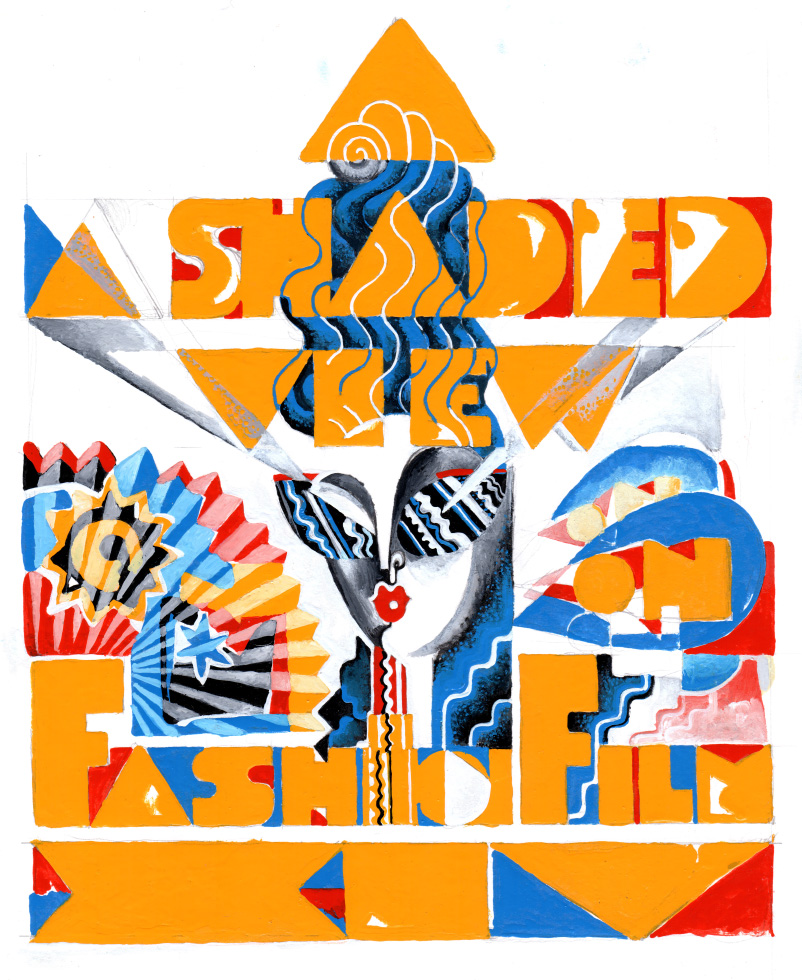
What does the fashion or cinema industry need right now? How do you see the future of it?
The fact that every brand - no matter how big or small - is now producing fashion films is testament to the fact that the genre has a bright future. I believe that fashion film will no longer be considered an 'alternative medium' for capturing and expressing fashion. It will be on the same level as photography. It needs to grow, but in such a short time it has already gained a lot of ground in terms of communication. I don’t see it as a trend. I think that it is something that will continue to grow and be used correctly, and will prove to be a great tool both commercially and in establishing an identity for a brand.
Fashion plays an important role in cinema today, whereas before it only had it with a limited number of directors such as Quentin Tarantino, Peter Greenaway, Almodovar. Many years later we have seen how directors are no longer as suspicious of fashion as they were when I started with my first fashion film festival. With the COVID19 pandemic, fashion films became more central than ever. But, in terms of fashion shows, nothing changed.
How do you think fashion changed through the years? For example, today we speak a lot about diversity in the fashion industry? What pushed you further in developing ASVOFF, in the search for stories, not just images and sounds, in the world of fashion?
Fashion was different at the time, very different. Diversity seems to have become the key word today. It's curious because when I was a fashion designer in New York for my brand, diversity wasn't something imposed, to put the spotlight on, but it was normal. It's a cliché to think that social media has fueled insecurities among users, causing them to feel unsatisfied with themselves. If you look at Jean Paul Gaultier's creations throughout his 50-year career, you will notice how he has always conceived of beauty in all shapes and sizes, nationalities and ages. Today there are also communication channels such as BOF (Business of Fashion) and other social media that organize talks on diversity, disability and the like. Let's just hope it's not a passing trend. Regarding ASVOFF, I have a bachelor's degree in filmmaking. I created and ran my own fashion brand for 13 years in New York and 5 years in Tokyo. Combining fashion and cinema was natural for me. I love fashion, I love cinema. Thus A Shaded View on Fashion Film was born.
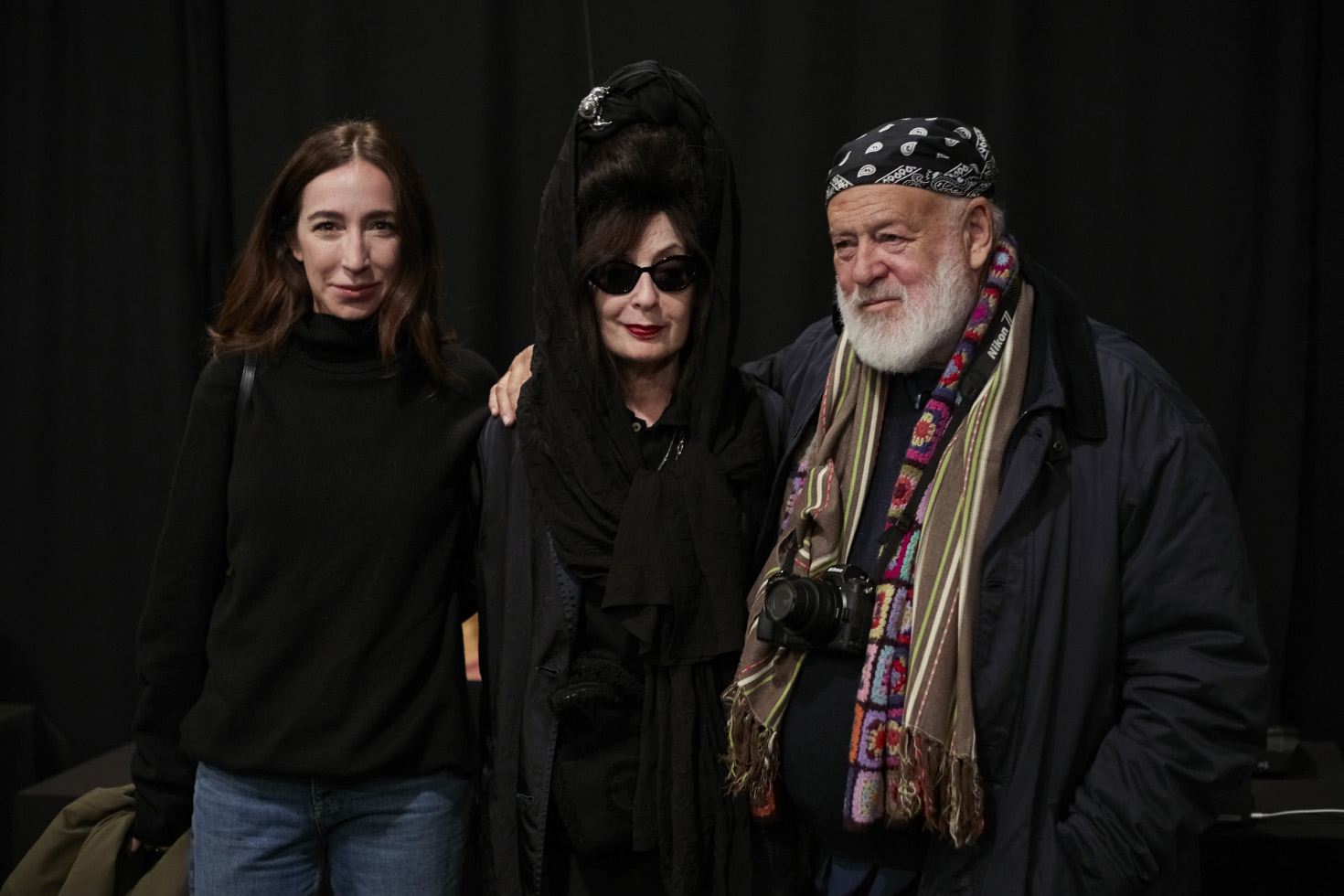
What is your process for choosing the fashion films shown for ASVOFF?
Does it take me somewhere that I have not already been? If the film moves the audience then it is a success. It is a choice by instinct; then I have a jury of experts that choose the winners.
‘Fashion film’ is a vibrant and still relatively new applied art form that has huge potential. It can also be a bona fide art form of its own accord, unlocking new creative energies to communicate fashion with the power of cinema and persuade consumers to tap into a brand. At the essence of it all, I suppose that the easiest way to define it is this: fashion film is a film where fashion is the protagonist, rather than a prop. Fashion is a high-impact, fleeting concept by its very nature, so usually they are short films. Certainly for my festival we focus mainly on fashion films that are between 30 seconds and 5 minutes long, but there are cases where they are longer. And you could argue, from another perspective, that a few feature films and documentaries over the course of cinematic history have also served as long fashion films.
There are the obvious technical challenges that are ongoing as a medium progresses. On the one hand, the technologies become more sophisticated so it opens up new vistas, but that also means that they are in the position of always having to catch up with the latest editing software and hardware innovations. I suppose the biggest challenge – no surprise here – is how to make it commercially viable. How to monetise fashion films is the ‘next big thing’ in the fashion industry, and retail, so we should all watch this space very carefully as brands increasingly make fashion films “shoppable”. There are plenty of exciting opportunities out there as the digital landscape changes. No one is entirely sure which business models are going to work yet and which aren’t, so it will be a lot more trial and error before we see a clear path to fashion film earning money – I mean besides the obvious outlets like being hired for a brand to do a video campaign.
